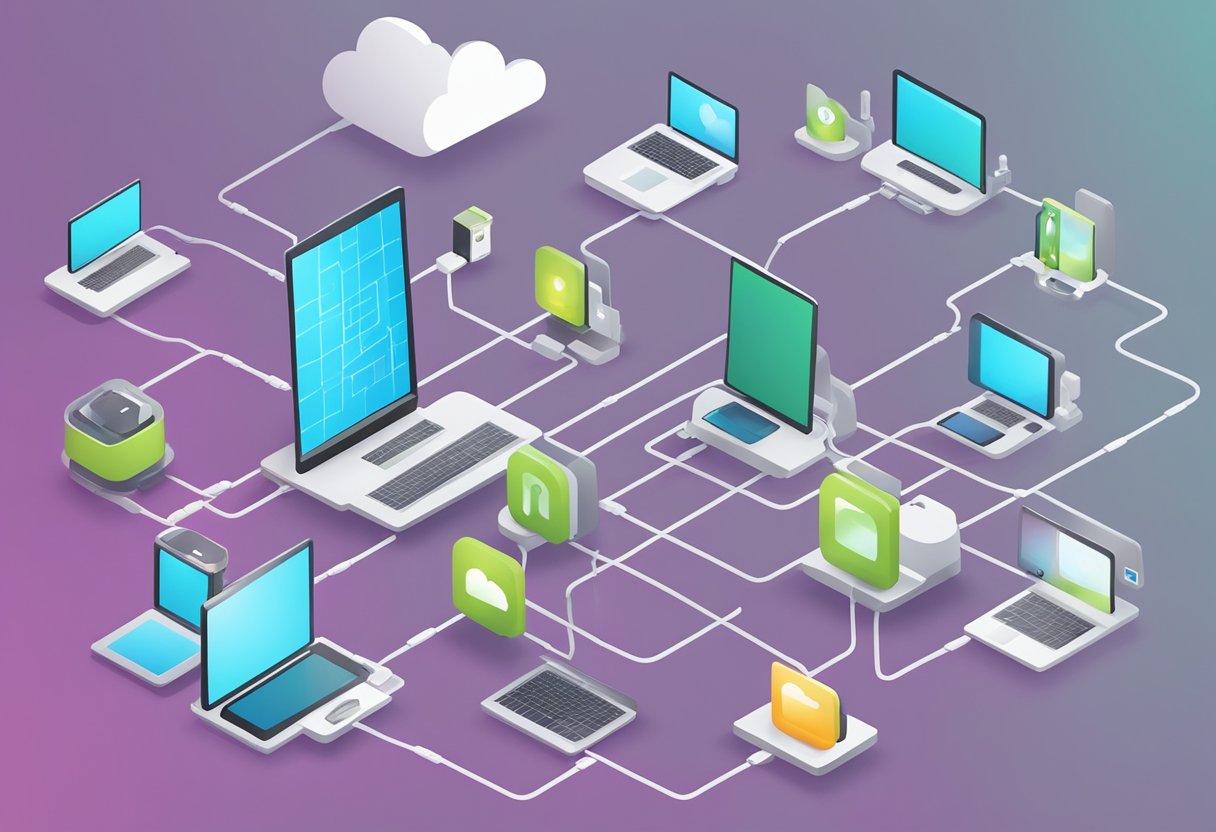P2P IoT platform is an emerging technology that enables direct communication and data sharing between IoT devices without a centralized server.
P2P IoT platforms leverage the power of distributed networks to facilitate seamless connectivity and collaboration among IoT devices.
With P2P IoT platforms, devices can communicate with each other directly, share resources, and work together to achieve common goals.
Fundamentals of P2P IoT Platforms
P2P IoT platforms are the foundation for deploying P2P IoT applications and services.
These platforms bring together the functionalities of P2P networks and IoT technologies to enable seamless device-to-device communication, data sharing, and resource management.
P2P IoT platforms eliminate the need for a central server to manage the communication between the IoT devices, making the communication process faster and more efficient.
Key Technologies and Protocols
P2P IoT platforms use a range of technologies and protocols to facilitate communication between IoT devices.
These include Bluetooth, Wi-Fi, Zigbee, and Z-Wave, among others.
These technologies enable IoT devices to connect to the P2P network and communicate with each other directly.
Additionally, P2P IoT platforms use various protocols such as CoAP, MQTT, and HTTP to enable data sharing and resource management between devices.
Key Takeaways
- P2P IoT platforms enable direct communication and data sharing between IoT devices without a centralized server.
- P2P IoT platforms use a range of technologies and protocols to facilitate communication between IoT devices.
- P2P IoT platforms eliminate the need for a central server to manage the communication between the IoT devices.
Fundamentals of P2P IoT Platforms
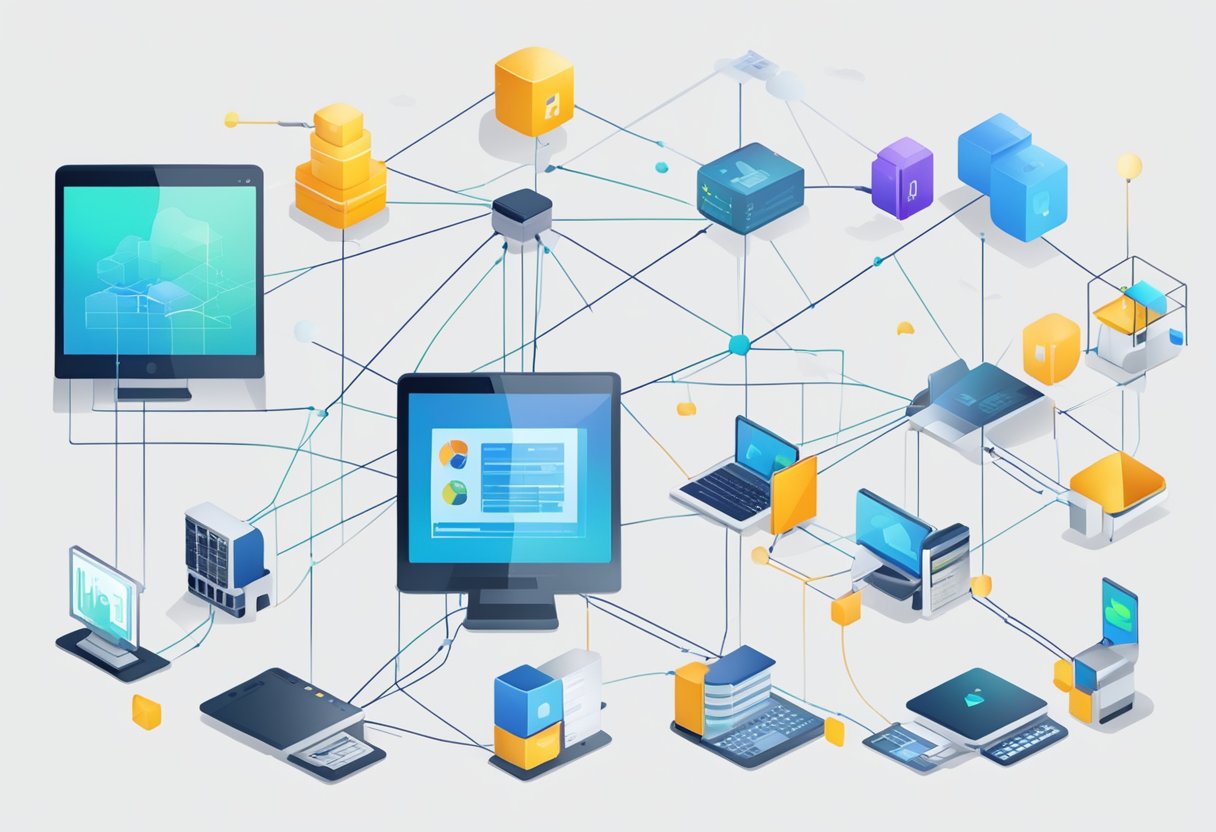
Defining P2P and IoT
Peer-to-peer (P2P) refers to a decentralized communication model where each device in the network can act as both a client and a server.
The Internet of Things (IoT), on the other hand, refers to the interconnectivity of physical devices that can collect and share data over the internet.
A P2P IoT platform is a combination of these two technologies, enabling direct communication between IoT devices without the need for a centralized server.
Advantages of P2P in IoT
One of the major advantages of P2P in IoT is the autonomy it provides to devices.
With a P2P IoT platform, devices can operate independently of a central server, allowing for greater flexibility and scalability.
This also means that P2P IoT platforms can be more resilient to failures, as there is no single point of failure in the network.
Another advantage of P2P in IoT is the potential for increased security.
By eliminating the need for a centralized server, P2P IoT platforms can reduce the risk of data breaches and hacking attempts.
Additionally, P2P protocols can provide end-to-end encryption, ensuring that data is only accessible to authorized devices.
Understanding Direct Device Communication
Direct device communication is a key feature of P2P IoT platforms.
With direct communication, devices can exchange data and resources without the need for a central server to act as an intermediary.
This can result in faster and more efficient data transfer, as well as reduced latency.
Key Technologies and Protocols
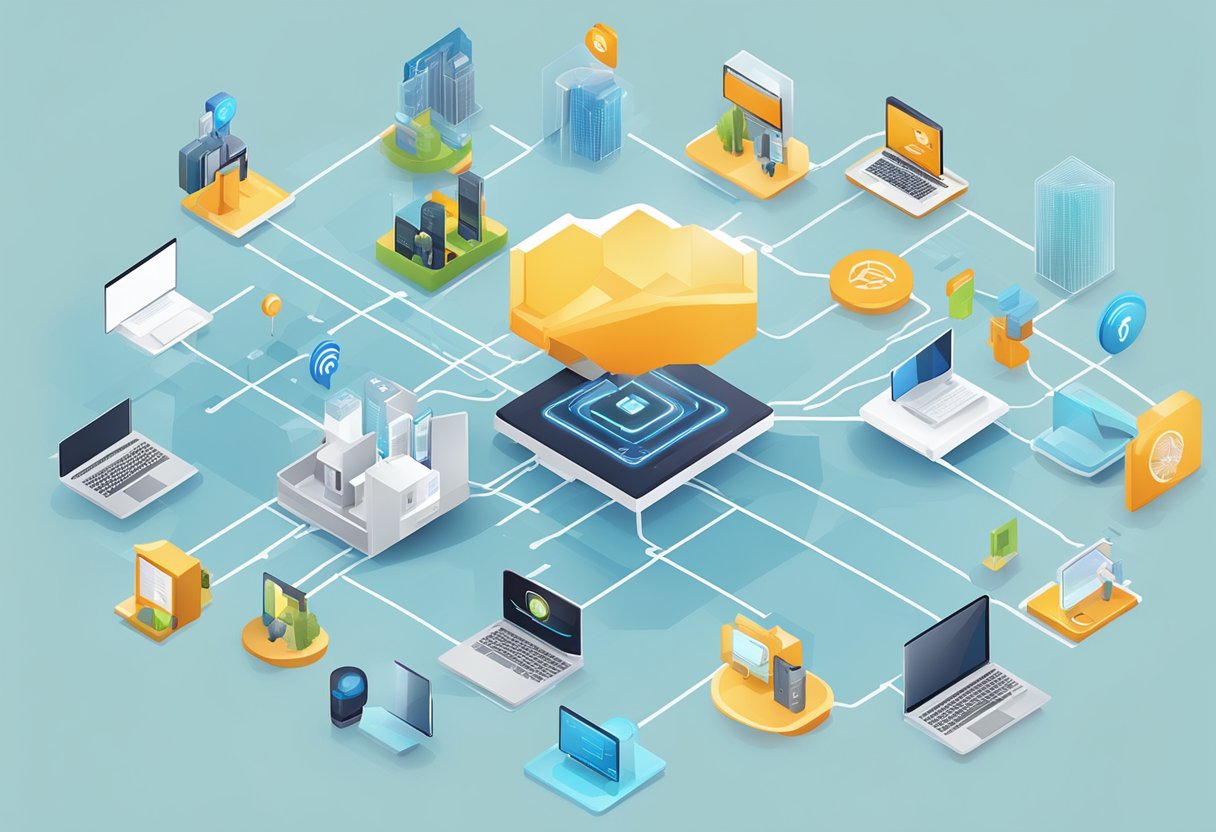
P2P IoT platforms rely on several key technologies and protocols to enable seamless device-to-device communication, data sharing, and resource management.
In this section, we will discuss some of the most important technologies and protocols that underpin P2P IoT platforms.
Communication Protocols
Communication protocols are essential for enabling devices to communicate with each other in a P2P network.
Some of the most commonly used communication protocols in P2P IoT platforms include Bluetooth, Wi-Fi, Zigbee, and Z-Wave.
Bluetooth and Wi-Fi are widely used for short-range communication, while Zigbee and Z-Wave are used for longer-range communication.
These protocols enable devices to transmit data and commands to each other, allowing them to work together seamlessly.
Security and Encryption
Security and encryption are critical components of P2P IoT platforms.
With the increasing number of connected devices, it is essential to ensure that data transmitted between devices is secure and encrypted.
P2P IoT platforms use various encryption techniques to protect data transmitted between devices.
Some of the most commonly used encryption techniques include Advanced Encryption Standard (AES), Secure Hash Algorithm (SHA), and Transport Layer Security (TLS).
These encryption techniques ensure that data transmitted between devices is secure and cannot be intercepted by unauthorized parties.
Integration with Existing Systems
P2P IoT platforms must be designed to integrate seamlessly with existing systems.
This integration enables devices to work together with other systems, such as cloud-based platforms, to provide a complete end-to-end solution.
P2P IoT platforms use various integration techniques, such as Application Programming Interfaces (APIs), to enable seamless integration with existing systems.
This integration ensures that devices can work together with other systems to provide a complete solution.
Architecture and Deployment
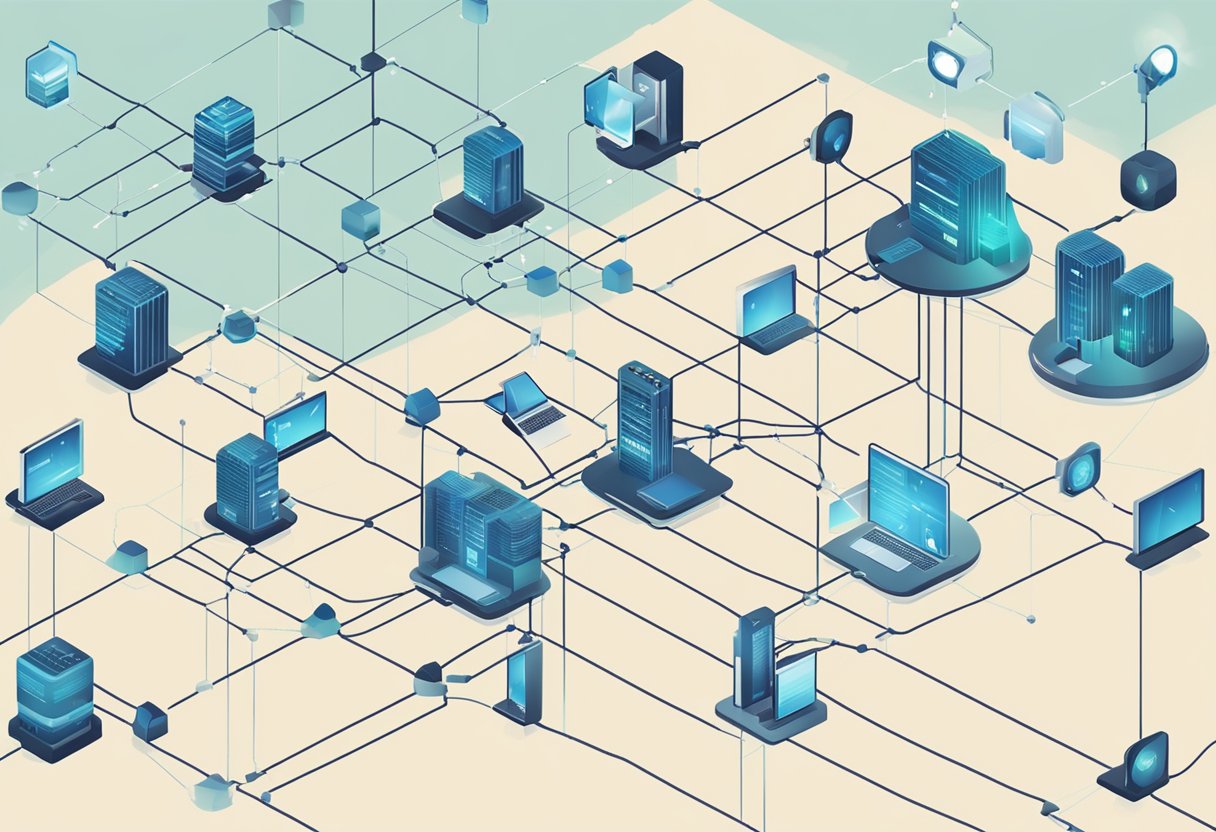
Decentralized Nature of P2P IoT
One of the defining characteristics of a P2P IoT platform is its decentralized nature.
Unlike traditional IoT architectures that rely on centralized servers to manage connectivity and data transfer, P2P IoT platforms enable direct device-to-device communication without the need for intermediaries.
This means that devices can communicate with each other in real-time, forging a direct line of connection that is faster and more efficient than traditional architectures.
Edge Computing and P2P
Edge computing is another critical component of P2P IoT platforms.
By pushing data processing and analysis to the edge of the network, P2P IoT platforms can reduce latency and improve overall system performance.
This is because edge devices can perform data processing and analysis locally, without the need for central servers.
This approach can also reduce the amount of data that needs to be transmitted over the network, which can help to reduce bandwidth requirements and improve overall system efficiency.
Deployment Strategies
When it comes to deploying a P2P IoT platform, there are several different strategies that can be used.
One approach is to deploy the platform in a controlled environment, such as a single building or campus.
This approach can help to ensure that the platform is secure and that all devices are properly configured and managed.
Another approach is to deploy the platform in a more open environment, such as a public space or city-wide network.
This approach can be more challenging, as it requires careful management of device connectivity and data transfer to ensure that the platform remains secure and efficient.
Security and Privacy Concerns
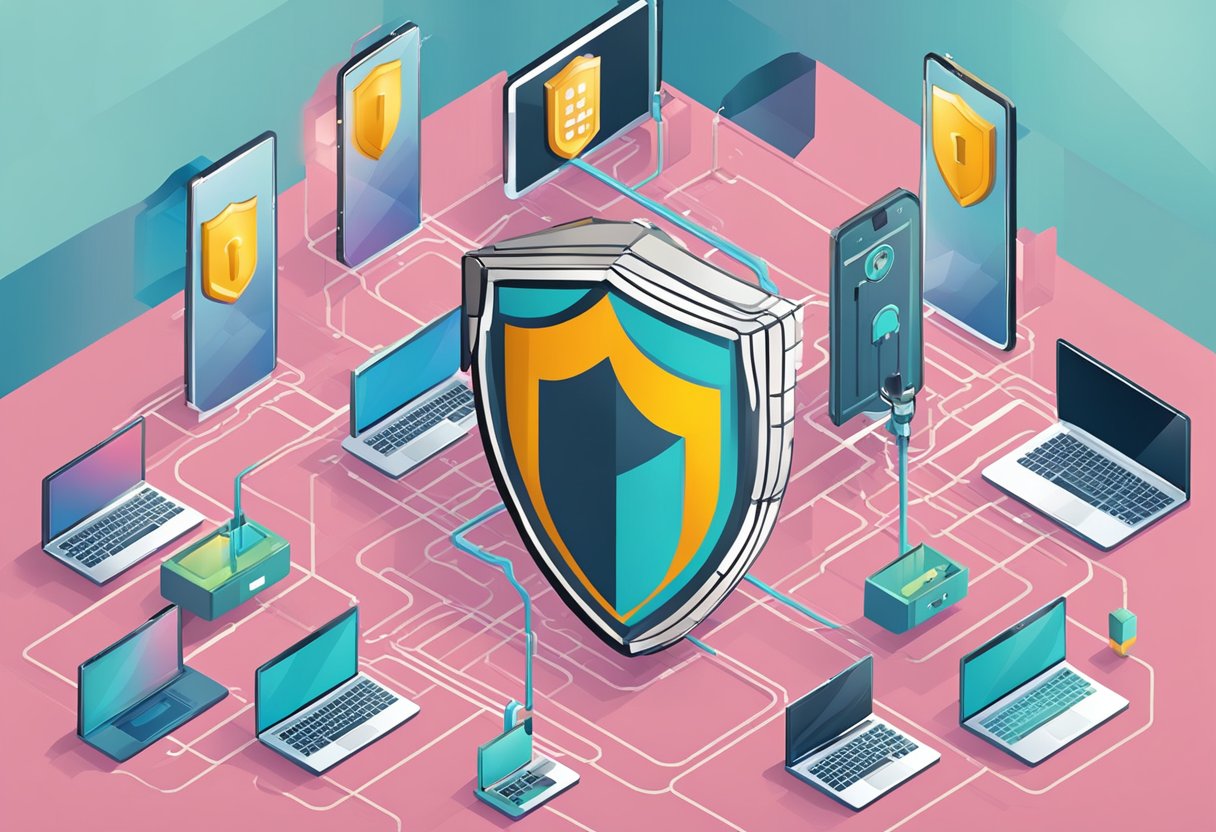
P2P IoT platforms have received significant attention due to their ability to facilitate direct communication and data sharing between IoT devices without a centralized server.
However, despite their numerous benefits, P2P IoT platforms are also associated with several security and privacy concerns.
Handling Vulnerabilities
One of the primary security concerns associated with P2P IoT platforms is the existence of vulnerabilities that can be exploited by hackers.
These vulnerabilities can be present in the software, hardware, or network infrastructure used by the platform.
To mitigate this risk, P2P IoT platforms must have robust security measures in place to detect and handle vulnerabilities.
This includes regular software updates, penetration testing, and the use of firewalls to prevent unauthorized access.
Privacy and Data Protection
P2P IoT platforms also raise concerns regarding data privacy and protection.
Since P2P IoT platforms enable direct communication between devices, there is a risk that sensitive data may be intercepted or accessed by unauthorized parties.
This can lead to data breaches, identity theft, and other forms of cybercrime.
To address this risk, P2P IoT platforms must implement enhanced security measures to protect user data.
This includes the use of encryption to secure data in transit and at rest, as well as strict access controls to limit data access to authorized parties only.
End-to-End Encryption
End-to-end encryption is a critical security feature that P2P IoT platforms must implement to ensure the confidentiality and integrity of user data.
This encryption technique ensures that data is encrypted at the source and decrypted only at the destination, preventing unauthorized access to the data in transit.
By implementing end-to-end encryption, P2P IoT platforms can protect user data from interception and ensure that it remains secure throughout its journey.
Performance and Scalability
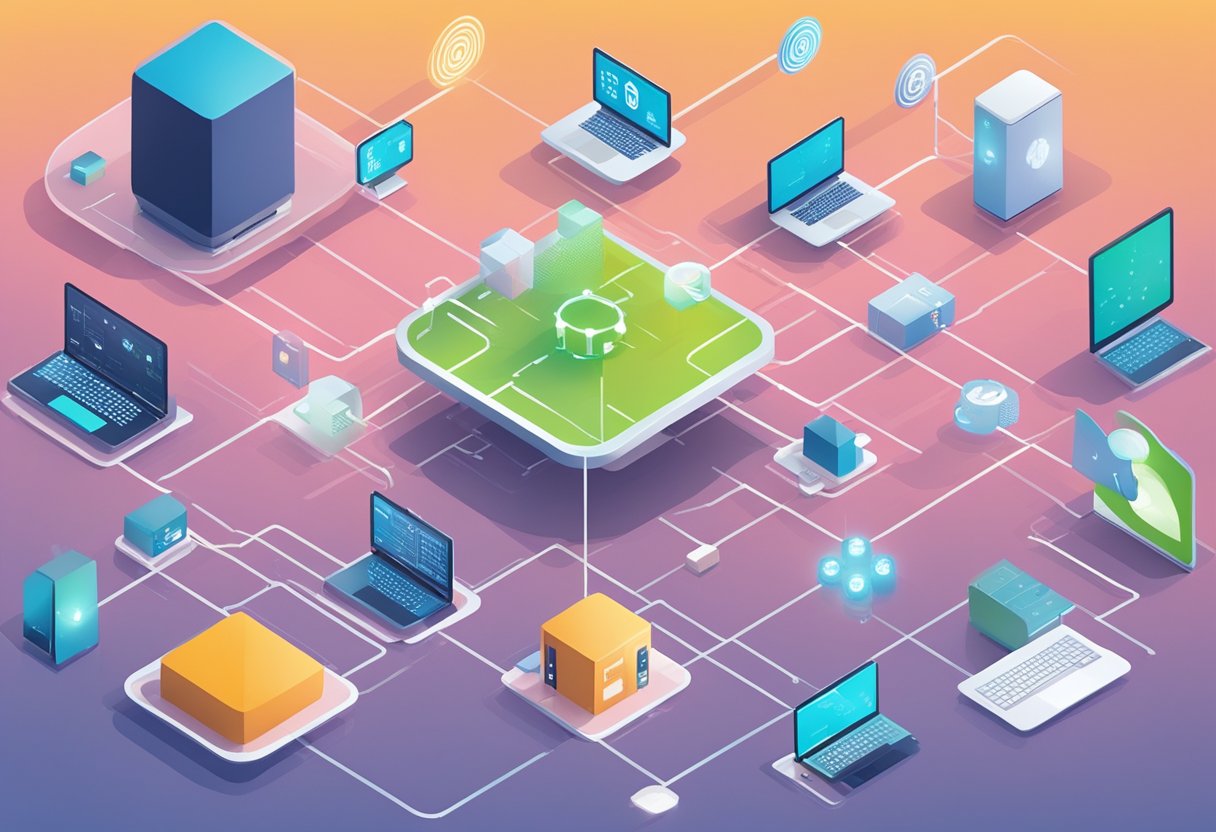
Improving IoT Performance
One of the key advantages of P2P IoT platforms is the ability to improve IoT performance.
With direct communication and data sharing between IoT devices, P2P IoT platforms can significantly reduce the latency associated with traditional client-server architectures.
This is because P2P IoT platforms eliminate the need for a centralized server, which can introduce delays in data transmission.
Moreover, P2P IoT platforms can improve performance by allowing for more flexible device connections.
With P2P IoT platforms, devices can connect to each other directly, rather than through a central server.
This can reduce the complexity of the network, which can further improve performance.
Scalability Challenges
While P2P IoT platforms offer significant performance advantages, they also present scalability challenges.
As more devices are added to the network, the available resources and capabilities increase, allowing for greater scalability and the ability to handle many participants.
However, the capacity of a central server or infrastructure does not limit this scalability, which can make it difficult to manage and monitor the network.
Maintaining Low Latency
Maintaining low latency is a critical concern for P2P IoT platforms. As the number of devices on the network increases, the latency associated with data transmission can also increase.
To maintain low latency, P2P IoT platforms must be designed to prioritize real-time data transmission and ensure that data is transmitted as quickly as possible.
To address these challenges, P2P IoT platforms must be designed with monitoring and management tools that can help maintain low latency and ensure that the network is performing optimally.
Additionally, P2P IoT platforms must be flexible enough to adapt to changing network conditions and support real-time data transmission.
Frequently Asked Questions
What are the benefits of using a P2P IoT platform over traditional IoT platforms?
P2P IoT platforms offer several benefits over traditional IoT platforms. One of the most significant benefits is that P2P IoT platforms can operate without a centralized server, allowing for direct communication and data sharing between IoT devices.
This direct communication reduces latency and improves the overall efficiency of the network. Additionally, P2P IoT platforms are more resilient to network failures and cyber-attacks, as there is no central point of failure.
How do P2P IoT platforms ensure data security and privacy?
P2P IoT platforms rely on strong encryption and authentication protocols to secure data, making it challenging for unauthorized parties to access or manipulate the information being exchanged.
P2P IoT platforms also offer more granular control over data access, allowing users to specify who can access their data and under what conditions. Additionally, P2P IoT platforms can benefit from the security features of blockchain technology, which provides an immutable and tamper-proof record of all transactions.
What are some common use cases for P2P IoT devices?
P2P IoT devices are becoming increasingly popular in a wide range of applications, including smart homes, industrial automation, and healthcare.
In smart homes, P2P IoT devices can communicate directly with each other, allowing for seamless integration and automation of various devices. In industrial automation, P2P IoT devices can improve efficiency and reduce downtime by enabling direct communication between machines. In healthcare, P2P IoT devices can improve patient outcomes by enabling remote monitoring and real-time data analysis.
How does P2P communication enhance IoT device functionality?
P2P communication allows IoT devices to communicate directly with each other, without the need for a centralized server or intermediary.
This direct communication enables faster and more efficient data exchange, which can improve the overall functionality of IoT devices. Additionally, P2P communication can reduce latency and improve the reliability of the network, which is critical in applications where real-time data is essential.
What factors should be considered when choosing a P2P IoT platform?
When choosing a P2P IoT platform, several factors should be considered, including the platform’s scalability, interoperability, security, and support for various communication protocols.
The platform should be able to handle a large number of devices and provide seamless integration with other devices and platforms. Additionally, the platform should offer robust security features, including encryption, authentication, and access control. Finally, the platform should provide excellent support and documentation to ensure that users can quickly and easily integrate their devices into the network.
How is device discovery handled in P2P IoT networks?
Device discovery in P2P IoT networks is typically handled through a combination of broadcast and discovery protocols.
When a new device is added to the network, it broadcasts its presence to other devices in the network. Other devices can then use discovery protocols to identify and communicate with the new device.
These discovery protocols can be based on various communication technologies, including Bluetooth, Wi-Fi, and Zigbee.

